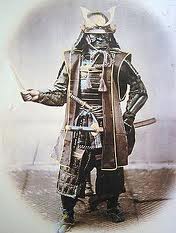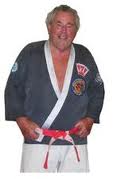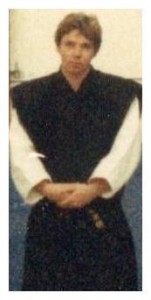History
HISTORY OF THE ART OF JU JITSU

Junsui Ryu Ju Jitsu is a modern style of the “gentle art” of Ju Jitsu. Ju Jitsu can also be translated as Jiu Jutsu, Ju Jitsu or is sometimes referred to as Yawara.
It is a method of fighting that can be unarmed or make use of weapons and employs holds, locks and throws to subdue an opponent.
Central to these techniques is the concept of jiu, from Japanese Kanji commonly interpreted as ‘gentle’ in the sense of yielding to an opponent’s direction of attack while attempting to control it. This is the concept of “Ju yoku go o sei suru”: “the soft conquers the hard”.
The methods of combat known as Ju Jitsu are at least 2000 years old, with mention in Japanese mythology. The beginnings of Ju Jitsu can be traced to the turbulent period of Japanese history between the 8th and 16th Century.
During this time, there was almost constant civil war in Japan and the classical weaponry systems were developed and honed on the battlefield. Close fighting techniques were developed as part of these systems to be used in conjunction with weapons against armoured, armed opponents.
The birth of Ju Jitsu probably coincided with the origins of the Samurai class in 792 AD. The army at that time consisted of foot soldiers armed with spears. Officers were recruited from the young sons of the high families and schooled in archery, swordsmanship and unarmed combat.

The Emperor Kammu built the Butokuden (Hall of the Virtues of War) as a formal school for these officers who became known as Samurai. Their name comes from the Japanese word for service, saburaui. The samurai worked for their masters, called shogun, who dominated political life from 1185 until 1868.
Medieval samurai were generally illiterate, rural landowners who farmed between battles. The progression from rural workers to ‘samurai’ took many centuries as they were increasingly called and relied on to defend the ruling classes. The word samurai means ‘those who serve’ and had come into use by the end of the 8th century.
The first publicly recognised Ju Jitsu School (“ryu”) was formed by Takenouchi Hisamori in 1532 and consisted of techniques of sword, jo‐stick and dagger as well as unarmed techniques. Because these techniques were designed for combatants wearing armour, the large leaping and kicking movements found in many other martial arts were not used in Jitsu.
Modern Ju Jitsu is a very different art compared to the traditional Japanese Schools (koryu) that teach Ju Jitsu alongside with the use of the sword, spear and other weapons. Trying to establish a link to the past with modern ju jitsu styles is somewhat akin to trying to unscramble an egg, because many modern schools have taken aspects of other martial arts and combined them with their own.
THE HISTORY OF JUNSUI RYU JU JITSU
Our style of Ju Jitsu has its roots in a style established by Pete Farrar. Pete was taught by Brian Graham and Brian by Matthew Komp. Each instructor’s style had significant differences to his mentor’s.
Matthew Komp

Hanchi Matthew Komp (10th dan in Australian jujutsu) learned his jujutsu in Germany from various instructors including Wolfe & Hassermayer who may have trained inJapan prior to the World War II. The most likely lineage for Komp’s style point towards Kano’s early Judo and show a strong similarity in the Kodokan’s techniques of self-defence (Goshin Jitsu). His instructors may also have experienced Kenshiro Abbe who taught in Europe prior to teaching aikido & judo in the UK.
Komp, who also held grades in judo, aikido and karate, emigrated to Australia in 1953, where he founded German style jujitsu schools in Melbourne. In addition to jujutsu, Komp taught judo to his students. They wore their judo grades as belts and their jujutsu grades as colour flash on their sleeves. An infrequent visitor to the club was Akira Miura (also referred to as Riukia or “Rocky” Myura), who was a Judo instructor at the Tokyo Police Academy. Komp was also visited by Chung Yung Kim, a judoka from Korea. Komp visited Japan and did a little teaching. His style was described as ‘similar to Shorinji Kempo’. There are however no direct links to Shorinji Kempo.
Brian Graham

Komp taught Brian Graham who, having emigrated from the UK to Australia in 1958, later returned to the UK in the late 1960s as a first dan in jujutsu (as well as a second dan in judo). Graham initially named his style ‘Shorinji Kempo Jiu Jitsu’, then later changed the name to ‘Shorinji Kan Jiu Jitsu’. This name reflects the superficial similarity to Shorinji Kempo (Shorinji) and its roots in Kano’s Judo/ Jiu Jitsu (Kan). Graham established a ‘Samurai jujitsu’ club in Keighley, Yorkshire. in 1969. In 1971 Brian received his second Dan, his third Dan in 1975, fourth in 1979 and fifth in 1983. Matthew Komp visited the UK in 1997, graded Brian to 6th dan and awarded him the title of Shihan.
Sadly Brian passed away in 2005.
Pete Farrar

One of Graham’s first students, Pete Farrar, who started learning jujutsu at the age of 9 in 1969, started a club in 1979 at Plymouth Polytechnic (now the University of Plymouth). Pete greatly changed his style from Brian’s and to cope with the administrative and organisational demands of the growing number of clubs, Pete founded an association called the National Samurai Jiu Jitsu Association (NSJJA). The NSJJA organised and ran national competitions, courses and gradings. In 1990 the NSJJA was rebranded as The Jitsu Foundation (TJF).
Sadly Pete passed away in 1997.
Paul Lemar
Paul Lemar had the honour of having briefly been taught by Hansho Komp and trained extensively under Shihan Graham and Sensei Farrar. Paul left the TJF in 2012 and formed Junsui Ryu Ju Jitsu.

